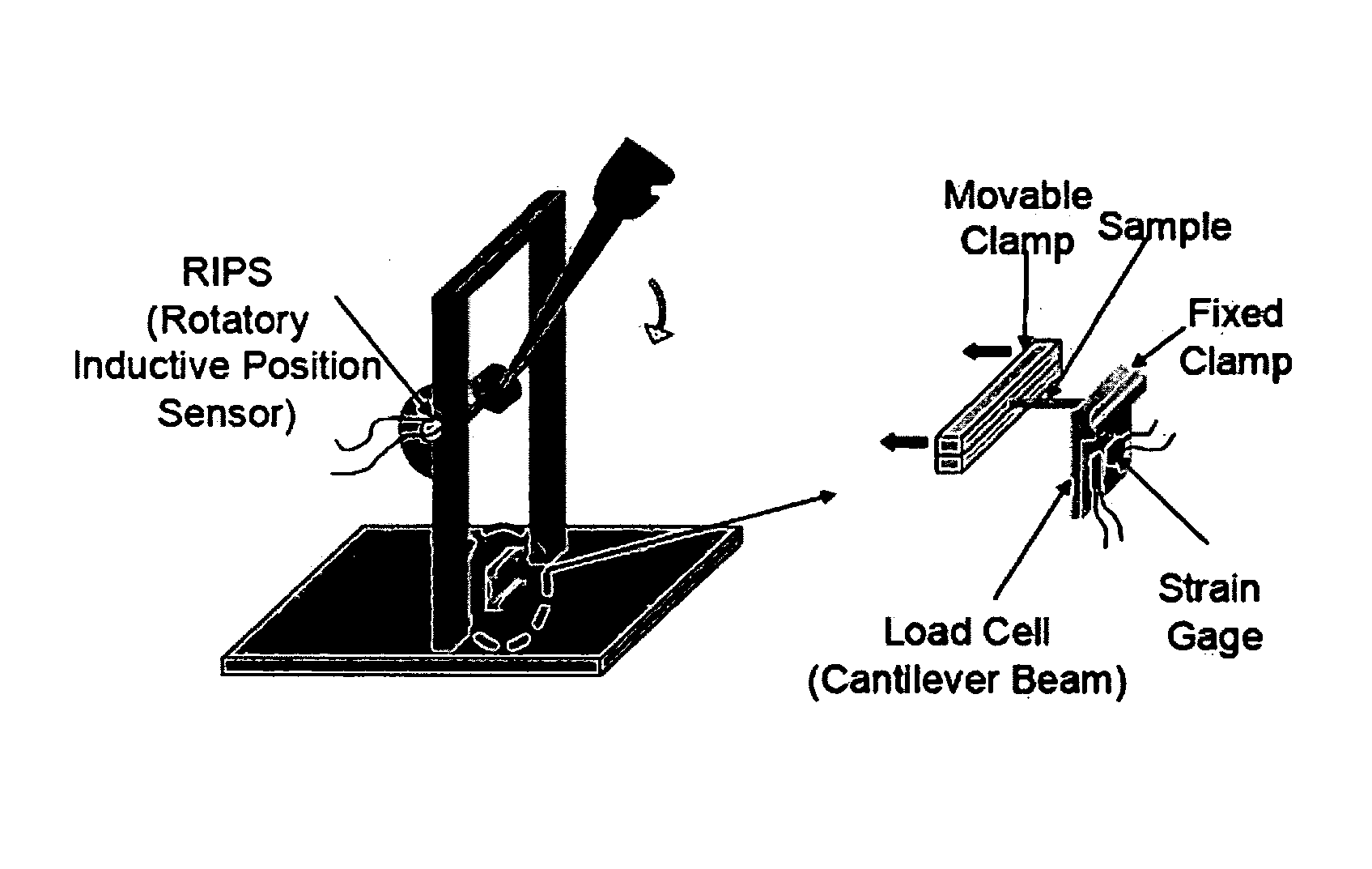Process for improving tear resistance in elastic films
- Summary
- Abstract
- Description
- Claims
- Application Information
AI Technical Summary
Benefits of technology
Problems solved by technology
Method used
Image
Examples
example 1
[0123]In this example, various monoalkenyl arene homopolymers were prepared. An appropriate amount of cyclohexane (purified with Alcoa alumina) was charged to a stainless steel reactor vessel and heated to 50° C. A calculated amount of sec-butyl lithium was charged, immediately followed by an amount of purified and stripped styrene. After a reaction time a calculated amount to consume >99.9% of the styrene monomer methanol was added to terminate the polymer. Polymers were made with 10,000; 14,000; 50,000 and 100,000 molecular weight. All had a polydispersity (Q) less than 1.2.
example 2
[0124]Various blends of monoalkenyl arene homopolymers, selectively hydrogenated block copolymers, and softening agents were prepared according to the following general procedure: 195 pounds of cyclohexane, 32 pounds of Kraton G1660 crumb, a selectively hydrogenated block copolymer and 40 pounds of a solution containing 80% cyclohexane and 20% of a 14,000 mw APS (thus a total of 8 pounds of the APS) were added to a Cowles high shear dissolver, along with a certain amount of, in order to form a solution containing about 15% weight solids. The resulting mixture was then heated to about 90° C., and allowed to mix at about 1400 RPM for 60 to 120 minutes. The solvent was then stripped in a cyclone and the blend recovered as crumb. The crumb, or other crumb containing other APS polymers, was dry blended with Drakeol 34 oil and pelletized using a Berstorff twin screw extruder. The composition of the various blends is shown below in Tables #3 and 4. Films were extruded using a Davis Standar...
example 3
[0125]In this comparative example, blends were made with crystal polystyrene, as opposed to anionic polystyrene. The results are shown in Table 5 below:
TABLE #51617181920212223G1660. ppw6060G1650, ppw6060Septon 4033, ppw6060EDF8995, ppw9080Oil, ppw2531253125311010Crystal PS, ppw15915915910AO330, ppw0.10.10.10.10.10.10.10.1Irgaphos 168, ppw0.20.20.20.20.20.20.20.2Tensile Data 50% Modulus10271696211761170198100% Modulus13497968614881222252300% Modulus347251278222330195438596Stress at Break39123260375733783900259263983862Elongation at Break %8.39.28.19.57.887.96.7200% HysteresisMax Stress183157154135141150242337% Energy Recovery8790838685868381Permanent Set %32.66.286.577.476.15.9Notched Tensile3.993.632.54Strength (MPa)Energy to Rupture9.268.277.92(KJ / M3 × 1000)
[0126]As shown in the above Tables 3-5, the compounds with the anionic polystyrene have much higher energies to rupture and strengths than compounds made with crystal polystyrene. Significantly, Comparative Example 18, made wit...
PUM
| Property | Measurement | Unit |
|---|---|---|
| Temperature | aaaaa | aaaaa |
| Temperature | aaaaa | aaaaa |
| Fraction | aaaaa | aaaaa |
Abstract
Description
Claims
Application Information
 Login to View More
Login to View More - R&D
- Intellectual Property
- Life Sciences
- Materials
- Tech Scout
- Unparalleled Data Quality
- Higher Quality Content
- 60% Fewer Hallucinations
Browse by: Latest US Patents, China's latest patents, Technical Efficacy Thesaurus, Application Domain, Technology Topic, Popular Technical Reports.
© 2025 PatSnap. All rights reserved.Legal|Privacy policy|Modern Slavery Act Transparency Statement|Sitemap|About US| Contact US: help@patsnap.com


